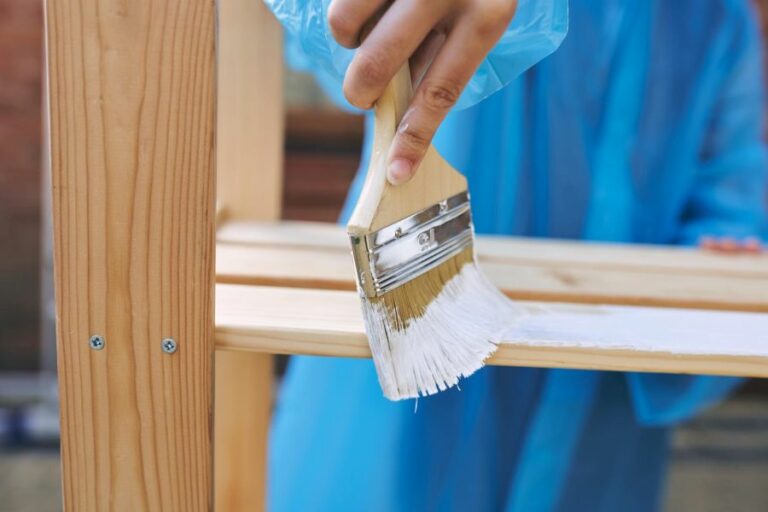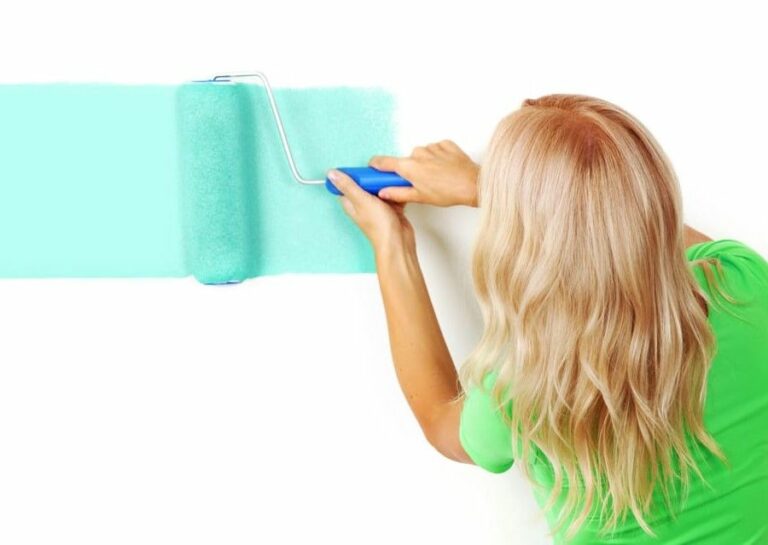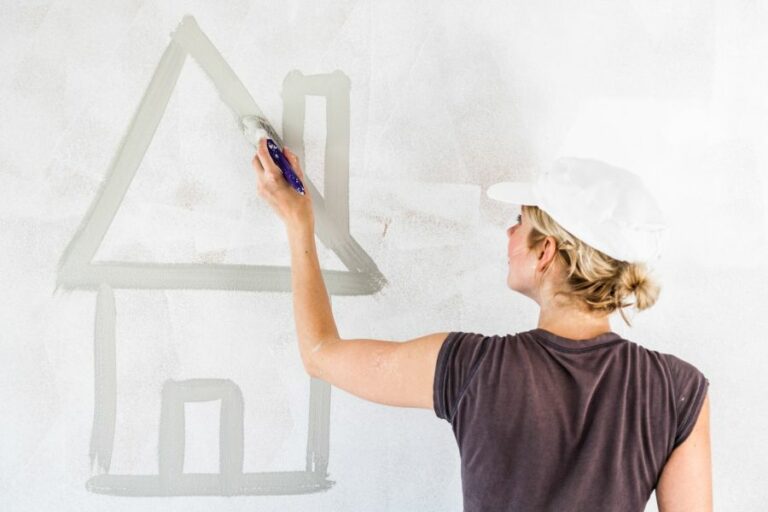The Ultimate Guide to Choosing the Best Outdoor Concrete Paint
Are you tired of your dull-looking outdoor concrete surface? Worry not, as we have curated a list of the best paints to give your outdoors a luxurious makeover. In our latest blog post, we dive into concrete paints, exploring their unique features, application methods, and aesthetic values. Discover top-notch products that are durable and weather-resistant and boast a stunning finish.
What is the best paint for outdoor concrete:
We highlight the best paint options for outdoor concrete surfaces, focusing on acrylic and epoxy paints. Acrylic paints are preferred for their weather resistance and ease of application, while epoxy paints offer higher durability and resist heavy foot traffic. Proper surface preparation, including cleaning, repairing, etching, and priming, is crucial for the paint’s longevity, regardless of the type used. Choose the right paint based on specific requirements and follow proper techniques for a professional, long-lasting result.

Discover the ultimate paint selection for outdoor concrete surfaces as we compare the top brands, weighing crucial factors such as durability, coverage, and finish. Learn expert tips and techniques for flawless application, extending the life and beauty of your concrete masterpiece.
Contents
- 1 Determining the Optimal Paint Choice for Outdoor Concrete Surfaces
- 2 What is the Durability and Lifespan of Concrete Paint for Outdoor Use?
- 3 Is it necessary to apply a primer on concrete surfaces before painting?
- 4 What is the Proper Technique for Painting Aged Outdoor Concrete Surfaces?
- 5 Is it Possible to Utilize Regular Paint on Exterior Concrete Surfaces?
- 6 Is it necessary to apply a sealer for exterior concrete paint?
Determining the Optimal Paint Choice for Outdoor Concrete Surfaces
Outdoor concrete surfaces require special attention when it comes to painting, as harsh weather conditions and constant exposure to the elements can affect the paint’s durability and longevity. We will discuss the best paint options for outdoor concrete surfaces and the key factors and steps to consider to achieve a professional and long-lasting result.
• Acrylic Versus Epoxy Paints
Two main types of paint can be used for outdoor concrete surfaces: acrylic and epoxy. Both options have their respective advantages, and your choice should depend on your specific requirements and preferences.
– Acrylic Paints
Acrylic paints are water-based and highly resistant to weather-related damage. They are the most popular choice for painting outdoor concrete because they are easy to apply, low in odor, dry quickly, and can be cleaned up with soap and water. Acrylic paints are available in various colors and finishes, making them versatile for various design preferences.
Pros:
- Easy to apply
- Quick drying
- Low odor
- Resistant to weather damage
- Wide range of colors and finishes
Cons:
- May require multiple coats for even coverage
- Can be less durable than epoxy paints
– Epoxy Paints
Epoxy paints are more durable than acrylic paints, forming a hard and glossy surface when cured. They are generally used for concrete floors or other high-traffic areas, as they can withstand heavy foot traffic and resist abrasion better than acrylic paints.
However, epoxy paints can be more challenging, requiring carefully mixing multiple components and a longer drying time.
Pros:
- Highly durable
- Resistant to abrasion and heavy foot traffic
- Glossy finish
Cons:
- More challenging to apply
- Long drying time
- Requires careful mixing of components
• Surface Preparation
No matter the paint type, proper surface preparation is crucial for the paint to adhere properly and last longer. Make sure to follow these steps before painting your outdoor concrete surface:
– Cleaning
Remove any dirt, mold, or mildew from the surface using a power washer or a solution of trisodium phosphate (TSP) and water. Clean off any grease or oil stains with a commercial degreaser.
– Repairing and Filling
Inspect the surface for any cracks or holes and repair them using a concrete repair compound or filler. Allow the repairs to dry and cure according to the manufacturer’s instructions.
– Etching
Etching is roughening the concrete surface to ensure the paint bonds well. Use a commercial etching solution per the manufacturer’s instructions, or use a 4:1 ratio of water and muriatic acid. Wear protective gear and follow safety precautions when working with chemical solutions.
– Priming
A concrete primer will help seal the surface, allowing the paint to adhere better and last longer. Choose a primer compatible with your chosen paint and follow the manufacturer’s instructions for application.
• Painting Tips for Outdoor Concrete
Once your surface is prepared, follow these tips for a professional and long-lasting result:
- Choose a dry day with low humidity and no rain in the forecast.
- Use a high-quality paint roller or brush with synthetic bristles for smooth and even application.
- Apply multiple thin coats of paint, allowing sufficient drying time between coats as per the manufacturer’s instructions.
- For epoxy paints, mix the components carefully and work quickly, as epoxy paints can have a short pot life.
• My Recommendations
I recommend using high-quality acrylic paint for most outdoor concrete surfaces, as it offers excellent weather resistance, ease of application, and a wide range of colors and finishes. However, epoxy paint would be a better option if you’re painting a high-traffic area or require a more durable and abrasion-resistant surface.
Regardless of your choice, ensure that you follow the proper steps for surface preparation and painting in order to achieve a professional and long-lasting result.
Brand | Product Name | Type | Durability | Price Range |
|---|---|---|---|---|
Rust-Oleum | EpoxyShield | Epoxy-based | High | $$ |
BEHR | Granite Grip | Acrylic-based | Medium | $ |
KILZ | Over Armor | Acrylic-based | Medium | $ |
INSL-X | Sure Step Anti-Slip | Acrylic-based | Medium | $ |
Drylok | Floor & Wall Masonry | Latex-based | Medium | $ |
What is the Durability and Lifespan of Concrete Paint for Outdoor Use?
Although concrete is a durable material, it may not always look attractive. Fortunately, concrete paint provides a fantastic solution to enhance the appearance of outdoor concrete surfaces. However, most people are curious how long their newly painted exterior concrete will last. We will delve into the longevity of concrete paint, factors affecting its durability, and tips to maintain it to ensure it remains attractive and functional for as long as possible.
• The Lifespan of Outdoor Concrete Paint
On average, outdoor concrete paint lasts between 3 to 5 years. However, this duration may vary depending on several factors, including the type and quality of paint, the surface preparation process, and the prevailing weather conditions. This broad range allows you to gauge the lifespan of your specific concrete paint application.
– The Role of Paint Quality
The type and quality of the paint used for your concrete project significantly influence the longevity of the paintwork. Although expensive, high-quality paint is undoubtedly worth the investment, as it ensures better performance and durability.
Here are some recommendations for choosing the right paint:
- Opt for paints specifically designed for concrete surfaces, as these adhere better and are more resistant to peeling, chipping, and other damage caused by extreme weather conditions.
- Consider selecting paint with built-in UV resistance, mildew resistance, and other additives for added protection against environmental challenges.
- Preferably, pick a paint that is 100% acrylic or an acrylic-urethane blend with a long-lasting, water-resistant finish.
– Surface Preparation: A Crucial Step for Paint Longevity
Proper surface preparation ensures that the paint adheres well and lasts longer. Before applying paint, ensure that the concrete surface is thoroughly cleaned and repaired if required.
- Clean the surface by power washing, sweeping, or using a cleaner or degreaser to remove dirt, grease, and other contaminants.
- Inspect the surface for cracks and repair them using a concrete patch or crack filler.
- Allow the surface to dry completely before applying any paint.
– Impact of Weather Conditions
Outdoor concrete paint is exposed to various weather conditions, such as sun, rain, wind, and fluctuating temperatures, affecting its lifespan. For instance, regions with harsh weather or frequent seasonal changes may cause the paint to deteriorate faster.
- Keep an eye on the weather forecast before starting your painting project to ensure a successful application by avoiding rain and extreme temperatures.
- Regularly inspect your painted surface for any indications of wear and tear, such as fading, cracking, or peeling, especially after harsh weather conditions.
• Maintenance: Prolonging the Life of Concrete Paint
Taking care of your painted concrete surfaces can help prolong the paint’s lifespan and ensure that it remains vibrant and appealing. Here are a few maintenance tips that can make a significant difference in the performance of the paint:
– Cleaning and Maintenance
- Sweep the painted surface regularly using a broom or a leaf blower to remove leaves, dirt, and other debris that may collect on it.
- When necessary, use a hose or a pressure washer to clean the surface, being careful not to damage the paint. Avoid using harsh chemicals that may strip away the paint or cause it to fade over time.
- Remove any stains or spills immediately, as they may become stubborn and difficult to remove over time.
– Preventing Damage
- Take proactive measures to prevent damage to your painted concrete surfaces, such as placing mats at entry points to minimize dirt, grime, and moisture buildup.
- Use protective sealants or coatings to safeguard the paint against damage from excessive water, UV rays, and other harmful elements.
• Wrapping Up
The lifespan of outdoor concrete paint depends on various factors, including paint quality, surface preparation, and weather conditions. On average, painted concrete surfaces last between 3 to 5 years, but with proper care and maintenance, you can prolong the paint’s longevity and keep your outdoor space fresh and attractive.
So, with the right paint, carefully prepared surfaces, and diligent maintenance, your outdoor concrete paint job should stand the test of time and provide you with a vibrant, beautiful space for years to come.
| How long does concrete paint last outside? |
|---|
| Concrete paint typically lasts between 2 to 10 years outside. The lifespan of concrete paint depends on factors such as the quality of paint, surface preparation, application method, and environmental conditions (weather, sun exposure, foot traffic, etc.). Regular maintenance and sealing can help extend the life of concrete paint. |
Is it necessary to apply a primer on concrete surfaces before painting?
• Importance of Priming Concrete Surfaces
Priming concrete surfaces before painting is a critical step in the painting process. It ensures a strong and durable bond between the paint and the concrete surface. Primers help to fill in any small surface imperfections, such as pores and cracks, and create a smooth base to paint to adhere.
Additionally, priming helps prevent issues like peeling, bubbling, and flaking of the paint in the long run. Therefore, if you are planning to paint a new or existing concrete surface, it’s highly recommended that you prime it first.
• Types of Concrete Primers
Two main types of concrete primers are available on the market: water-based and solvent-based. Each has its own benefits and specific applications.
– Water-Based Primers
Water-based concrete primers are popular due to their low odor, easy clean-up, and lower volatile organic compounds (VOC) levels. These primers dry fairly quickly, which allows you to apply your paint sooner. They’re ideal for indoor applications and use on surfaces with minimal exposure to moisture.
– Solvent-Based Primers
Solvent-based concrete primers are more durable than water-based primers and provide better adhesion to the concrete surface. These primers are typically more resistant to moisture, making them suitable for outdoor applications or projects where water exposure is a concern.
However, solvent-based primers generally have higher VOC levels and a stronger odor, which can be a concern for indoor use.
• Preparing the Concrete Surface
Before priming and painting, it is crucial to prepare the concrete surface properly. This helps ensure a strong bond between the primer, paint, and surface. Here are the recommended steps for preparing a concrete surface:
– Cleaning and Degreasing
Remove any dirt, debris, and grease from the surface with a thorough cleaning. Use a degreasing solution or a power washer for best results. Remember that freshly poured concrete should cure for at least 28 days before applying paint or primer.
– Removing Efflorescence
Efflorescence is a white powdery substance that sometimes appears on concrete surfaces. It is caused by the migration of water-soluble salts to the surface of the concrete.
To remove efflorescence, scrub the surface with a brush and a mixture of water and muriatic acid, following the manufacturer’s instructions for the correct dilution ratio. Rinse thoroughly and let the surface dry completely before proceeding.
– Repairing Cracks and Holes
Inspect the surface for cracks, holes, or other imperfections needing repair. Use a concrete patching compound or a concrete filler to repair necessary areas. Allow the repair material to cure before priming according to the manufacturer’s directions.
– Testing Moisture Content
High moisture content in concrete surfaces can cause paint adhesion problems. To check for excessive moisture, tape a 2-foot by 2-foot piece of plastic sheeting to the concrete, sealing all edges. Leave it in place for 24 hours, then check for condensation on the underside of the sheet.
Additional drying or moisture mitigation steps may be needed if moisture is present.
• How to Apply Concrete Primer
Once the surface is prepared, it’s time to apply the primer. Here’s a step-by-step guide on how to do this:
- Choose the right primer: Select a water-based or solvent-based primer depending on your needs and the type of paint you’re using. Make sure the primer is specifically designed for use on concrete surfaces.
- Mix the primer: Stir thoroughly to ensure all the components are well-blended.
- Apply the primer: Using a brush or roller, apply the primer evenly to the entire surface. For best results, apply the primer in a thin, even layer and avoid overworking the material. This will help ensure a smooth surface for the paint to adhere to.
- Allow the primer to dry: Let the primer dry completely before applying the paint. The drying time will vary depending on the type of primer used and the environmental conditions. Refer to the manufacturer’s instructions for recommended drying times.
• Conclusion
In conclusion, priming a concrete surface before painting is essential for ensuring proper adhesion, durability, and longevity of the paint. By preparing the surface and applying a suitable primer, you can achieve a professional-quality finish that will last for years to come.
Remember to choose the right primer for the job based on the type of paint you’ll be using and the specific requirements of your project. Don’t skip this crucial step; you’ll be on your way to a beautiful, long-lasting paint job.
What is the Proper Technique for Painting Aged Outdoor Concrete Surfaces?
Revitalizing or transforming the appearance of old and faded outdoor concrete surfaces can seem daunting. However, with the right tools, materials, and guidance, the process can be straightforward, even for beginners.
We outline a step-by-step approach to preparing, painting, and sealing old outdoor concrete surfaces, including essential tips and recommendations from personal experience.
• Assessing the Condition of the Concrete
Before diving into the painting process, the first step is to inspect the concrete surface for any damages or issues that must be addressed. Look for signs of:
- Cracking
- Spalling or flaking
- Efflorescence (white powdery deposits)
- Mold and mildew
- Stains and discolorations
If any of these issues are present, they should be dealt with appropriately before painting to ensure a smooth, long-lasting finish.
– Repairs and Cleaning
- Fill cracks and holes: Use a quality patching compound or concrete filler designed for outdoor applications to fill any small cracks or holes. Allow the filler to cure according to the manufacturer’s instructions, usually 24-48 hours.
- Remove loose or flaking concrete: Using a wire brush or masonry chisel, scrape away any loose or spalling concrete. For larger areas of damage, consider using a pressure washer, ensuring you hold the nozzle at a low angle to avoid further damage.
- Tackling efflorescence and mold: Use a stiff-bristle brush and a specialized cleaning solution to remove efflorescence, mold, or mildew. Apply the cleaning agent according to the product’s directions, and then scrub or pressure wash the area.
- Remove stains and discolorations: Apply a concrete cleaner or degreaser, following the manufacturer’s instructions. Consider using a power washer or stiff-bristle brush for stubborn stains for improved results.
- Rinse the surface thoroughly: After addressing any issues with the concrete’s condition, ensure the entire surface is cleaned of debris and cleaning solutions. A hose or pressure washer can be used for this step.
• Preparing the Surface for Painting
To ensure proper paint adhesion to the surface, it is essential to prepare the concrete appropriately. This includes allowing the surface to dry, roughing the surface for better paint adherence, and applying a primer.
– Drying the Surface
Allow the concrete to dry completely after cleaning and rinsing. This process can take 24-72 hours depending on temperature and humidity levels.
– Roughening the Surface
For better paint adherence, it is recommended to etch or roughen the concrete surface. There are two common methods for achieving this:
- Chemical etching: Apply a concrete etching solution according to the manufacturer’s instructions, typically including a scrubbing and rinsing process.
- Mechanical etching: With a rented or purchased tool such as a diamond grinder or shot blaster, mechanically grind the surface of the concrete to create a rough, textured finish.
– Applying a Concrete Primer
After roughening the surface, applying a concrete primer or sealer can help create a better bond between the concrete and paint. Follow the manufacturer’s instructions on the application method and drying time.
• Choosing the Right Paint and Supplies
When painting outdoor concrete, selecting the appropriate paint type and quality to withstand weather, foot traffic, and other stresses on the surface is crucial. Some popular options include:
- Acrylic latex
- Epoxy
- Urethane
Acrylic latex paint is generally recommended for outdoor concrete due to its durability, weather resistance, and ease of application. Always choose a high-quality, exterior-grade paint product for the best results.
In addition, gather the necessary painting supplies, such as:
- Paint roller and roller cover (designed for use with the chosen paint type)
- Paintbrushes
- Paint tray
- Painter’s tape
• Applying the Paint
Once the surface is prepared and the appropriate materials have been selected, follow these steps for painting old outdoor concrete:
- Apply painter’s tape: Apply tape around the edges of the concrete surface to protect adjacent areas from paint splatter and accidents.
- Mix and pour the paint: Thoroughly mix the paint and pour an appropriate amount into the painting tray.
- Begin painting: Using a paint roller, apply the paint in even strokes, starting at one corner of the surface and working your way across. For smaller or hard-to-reach areas, use a paintbrush as needed.
- Allow to dry: Allow the first coat of paint to dry according to the manufacturer’s recommended time, typically 2-4 hours for acrylic latex paint.
- Apply a second coat if necessary: Evaluate the coverage of the first coat, and if needed, apply a second coat to achieve uniform color.
• Sealing the Concrete Surface
To protect the newly painted surface from moisture, dirt, and other stains, apply a concrete sealer as a final step. Select a sealer compatible with the chosen paint type and follow the manufacturer’s instructions for application and drying time.
Allow the sealer to cure for at least 24 hours before subjecting the surface to foot traffic or other stressors.
Step | Description |
|---|---|
1 | Choose a high-quality outdoor concrete paint designed for durability and weather resistance. Mix the paint well, and apply it with a brush, roller, or sprayer, following the manufacturer’s instructions. |
2 | Use a pressure washer to thoroughly wash the concrete surface, removing dirt, stains, and mildew. |
3 | Repair any cracks or damage with a concrete filler or patching compound, allowing it to dry according to the manufacturer’s instructions. |
4 | Choose a high-quality, outdoor concrete paint designed for durability and weather resistance. Mix the paint well, and apply it with a brush, roller, or sprayer, following the manufacturer’s instructions. |
5 | Apply a concrete primer or sealer to the surface, allowing it to dry according to the manufacturer’s instructions. |
6 | Allow the paint to dry for at least 24 hours, and apply a second coat if necessary for even coverage and additional protection. |
7 | Choose a high-quality outdoor concrete paint designed for durability and weather resistance. Mix the paint well, and apply it with a brush, roller, or sprayer, following the manufacturer’s instructions. |
8 | Allow the paint to cure completely, typically one to two weeks, before using the area or placing heavy objects on it. |
Is it Possible to Utilize Regular Paint on Exterior Concrete Surfaces?
When painting outdoor concrete surfaces, many people wonder whether they can use regular paint or need to purchase specialized paint specifically made for concrete. The durability and adhesion of the appropriate type of paint are crucial factors to consider due to the rough and porous nature of concrete surfaces.
We will explore the different types of paint suitable for outdoor concrete, the preparation process, application techniques, and maintenance and protection to ensure a long-lasting and visually appealing surface for years to come.
• The Importance of Selecting the Right Paint
Choosing the right paint for outdoor concrete is critical as the wrong type of paint can lead to various issues, including peeling and cracking or an overall lack of adhesion. Regular latex or acrylic paint is not typically designed for outdoor concrete surfaces and, as a result, may not provide the necessary protection, durability, or longevity needed for those surfaces.
Instead, it is recommended to use specialized concrete paint or coatings specifically designed for outdoor concrete surfaces. These types of paint are formulated to endure the demands of harsh weather conditions, UV radiation, and foot or vehicle traffic. Furthermore, concrete paints contain additives and binders that create a stronger bond with the concrete substrate, making them the better option for long-term durability.
– Masonry Paint: The Best Option for Outdoor Concrete
The ideal choice for outdoor concrete surfaces is masonry paint, also known as elastomeric paint. This type of paint is formulated with specialized additives that promote adhesion, flexibility, and resistance to weathering, while also providing a breathable coating that allows moisture to escape from the concrete substrate.
Masonry paint applies to various outdoor concrete surfaces, including patios, walkways, foundations, and retaining walls. This paint is water-based, making it easy to clean up with soap and water, and it dries quickly, providing a long-lasting and durable coating suitable for various climates.
• Preparing the Outdoor Concrete Surface for Painting
Proper surface preparation is essential to ensure optimum adhesion and longevity of the paint coating. Skipping the preparation process will likely result in a weak bond between the paint and the concrete surface, which can lead to premature peeling, flaking, or failure of the paint film.
– Step 1: Clean the Surface
A clean and debris-free surface is vital before painting outdoor concrete. Remove dirt, grease, oil, or moss from the surface by sweeping and power washing the area. Use an appropriate concrete cleaner and brush to scrub the surface thoroughly for stubborn stains. After cleaning, allow the surface to dry completely.
– Step 2: Repair Damages
Inspect the concrete surface for any cracks, holes, or other imperfections. Follow the manufacturer’s instructions to repair these damages using a suitable concrete repair product, such as a patching compound or crack filler. Allow the repairs to cure fully before proceeding to the next step.
– Step 3: Apply a Concrete Primer
Applying a primer before painting outdoor concrete promotes better adhesion and enhances the paint’s durability. Use a high-quality masonry primer and apply it evenly to the surface using a roller or brush. Allow the primer to dry according to the manufacturer’s recommended drying time.
• Applying the Masonry Paint to Outdoor Concrete
Once the surface is clean, repaired, and primed, it’s time to paint the outdoor concrete.
– Step 1: Choose the Appropriate Paint Finish
Masonry paint is available in various finishes, including flat, satin, and semi-gloss. The finish you choose will determine the final appearance and required maintenance level. Flat finishes are the most porous and may hold dirt and stains, while semi-gloss finishes are more dirt-resistant and easier to clean.
Choose the finish that best suits your project’s aesthetic and maintenance requirements.
– Step 2: Apply the Paint
Use a high-quality paint roller or brush to apply the masonry paint in thin, even coats. Always start at one edge and work across the surface, maintaining a wet edge to prevent lap marks and avoiding puddling or pooling of the paint. Two or more coats may be necessary to achieve the desired coverage and appearance. Allow sufficient drying time between each coat, as the paint manufacturer specifies.
• Maintenance and Protection for Outdoor Concrete Surfaces
After painting your outdoor concrete surface, it’s essential to maintain and protect it to ensure that the paint lasts as long as possible. Regularly clean the surface to remove accumulated dirt, debris, or stains. Repair any visible damage promptly, such as cracks or chipping paint.
For added protection and to preserve the paint’s appearance & longevity, consider applying a compatible sealer or clear coat after the final paint layer has cured. This extra layer creates a barrier against dirt, chemicals, and UV radiation, which helps prevent premature wear or fading.
In conclusion, using the appropriate paint, proper surface preparation, and applying the paint as recommended will ensure a long-lasting and visually appealing outdoor concrete surface. By choosing specialized masonry rather than regular paint, you can be confident that your outdoor concrete is well-protected and looking its best for years.
Question | Answer |
|---|---|
Can you use regular paint on outdoor concrete? | No, it is not advisable to use regular paint on outdoor concrete as it may not adhere properly and can easily peel or chip off. Instead, use a high-quality paint specifically designed for outdoor concrete surfaces. |
Is it necessary to apply a sealer for exterior concrete paint?
When painting exterior concrete surfaces, one common question is whether or not a sealer is necessary. We will explore the benefits of using a sealer with exterior concrete paint, the different types of sealers available, and provide recommendations on which sealers work best for different situations.
• Advantages of Using a Sealer with Exterior Concrete Paint
There are several reasons why using a sealer with exterior concrete paint can be beneficial:
- Durability: Sealers can help extend the lifespan of your exterior concrete paint by providing an additional layer of protection from various elements, such as UV rays, moisture, and dirt.
- Moisture protection: One of the main reasons for using a sealer is to prevent moisture from penetrating the concrete surface, which can lead to the paint peeling or flaking off. Sealers act as a barrier against water and help to reduce the occurrence of mold and mildew.
- Enhanced appearance: A sealer can help enhance the overall appearance of your freshly painted concrete surface. It can provide a glossy, wet-look finish or a matte finish depending on your preference. Sealing the paint can also achieve a more uniform color and texture.
- Easier maintenance: Sealed concrete surfaces are more resistant to stains and easier to clean. In most cases, a simple pressure washing will remove dirt and debris without peeling or damaging the paint.
• Types of Sealers Suitable for Exterior Concrete Paint
Various types of sealers can be used with exterior concrete paint, each offering its benefits and limitations. Some of the most common types include:
– Acrylic Sealers
Acrylic sealers are one of the most popular choices for sealing exterior concrete surfaces due to their ease of application and relatively low cost. They are available in water- and solvent-based formulas, with water-based sealers being more environmentally friendly and easier to clean up.
Acrylic sealers balance durability and breathability, allowing moisture vapor to escape from the concrete while protecting against water penetration. This makes them suitable for vertical and horizontal surfaces, such as walls and driveways.
– Polyurethane Sealers
Polyurethane sealers are another common choice for sealing exterior concrete paint. They are known for their high durability and resistance to chemicals and abrasion, making them an excellent option for surfaces with heavy traffic or exposure to harsh elements.
However, polyurethane sealers are less breathable than acrylic sealers, which might not be ideal for some applications. They are also more expensive and can be more challenging to apply.
– Epoxy Sealers
Epoxy sealers are a high-performance option, offering excellent durability and resistance to chemicals, abrasion, and UV rays. They are often used in commercial and industrial settings due to their superior performance.
However, epoxy sealers have some drawbacks, such as being less breathable than acrylic sealers, making them less suitable for some applications. They are also more challenging to apply and have a higher price point than acrylic or polyurethane sealers.
• Recommendations for Sealing Exterior Concrete Paint
Based on the above information and personal experience, the following recommendations can be made regarding the use of sealers with exterior concrete paint:
- Always use a sealer: Considering the various benefits of sealers, using a sealer with exterior concrete paint is strongly recommended. It can extend the lifespan of your paint and provide enhanced protection against environmental factors.
- Choose the appropriate sealer: Determine the factors that are most important for your specific situation, such as breathability, level of durability, and resistance to chemicals or abrasion. Based on these requirements, choose a sealer that aligns with your needs.
- Follow the manufacturer’s instructions: Each sealer will have specific instructions for application, drying time, and any additional preparation required. Ensure that you follow these instructions carefully to achieve the best possible results.
- Reapply as necessary: Sealers can wear down over time, so it is essential to reapply them periodically to maintain the protective layer. The frequency and timing of reapplication will depend on the specific sealer used and the conditions it is exposed to.
In conclusion, using a sealer with exterior concrete paint is a worthwhile investment that can extend the life of your paint job and improve its overall appearance. By understanding the different types of sealers available and how they can benefit your specific situation, you can select the most suitable sealer for your needs and ensure a successful, long-lasting paint job.







